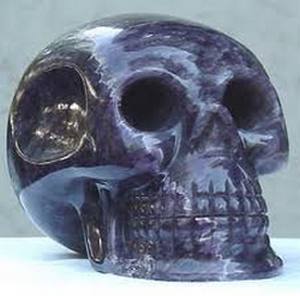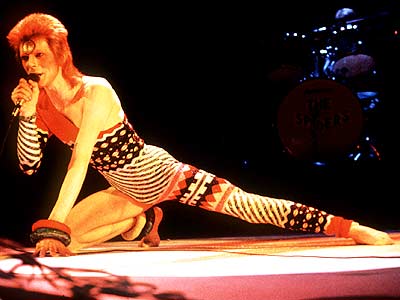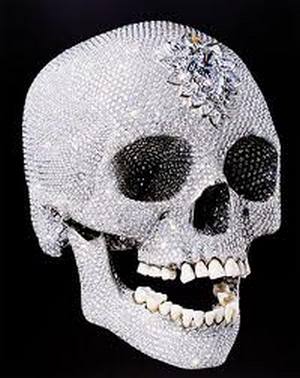Heads: barring some sort of tragic motorcycle accident, we’ve all got one. But sometimes something as common as the bones necessary to our existence can transcend the norm and become something really, really strange. Here are five weird craniums that’ll shake up yours.
1.
Crystal Skulls
Before the last Indianan Jones movie came along and ruined everything, crystal skulls were an abnormality in the world of archeology. Made of clear quartz stone and alleged to belong to various Mesoamerican civilizations, crystal skulls have long stood as mystical objects in fiction and the occult. Sadly, the truth isn’t nearly as awesome, much like the last Indiana Jones movie.

We suppose what we’re trying to say here is, this movie was poorly received.
The first documented discoveries of crystal skulls started rolling in during the late 19th century, primarily in South and Central America. Skulls found at different locations have some traits in common, such as size (with all of these skulls being approximately life-size), the quality of the quartz used, and the condition of the skulls themselves. Museums began purchasing the skulls from archeologists and antique salesmen assuming they were per-Columbian artifacts. As they became a popular attraction, stories began to circulate that the skulls held paranormal power over life and death. Spooky!

Yep, spooky.
But, of course, museums have to always bring along their nosy friend “science”. Close inspections uncovered that the skulls were made with tools not consistent with the time period they were allegedly made in and placed their creation much more recently – in the late the 19th century. This makes sense (much more so than some sort of magical skull, anyway) because that’s the same time that pre-Columbian artifacts were a big hit with counterfeiters and con-artists. All of the crystal skulls still on display (primarily in Europe) are believed to have been manufactured in Europe with jeweler’s tools.
2.
The Starchild Skull
Evidence of extraterrestrials is, generally speaking, pretty damn flimsy. Grainy photographs of Frisbees and the movies of Steven Spielberg don’t make a very convincing argument for life on other planets. That’s why, whenever a discovery is made that can’t immediately be explained away with science, UFOlogists get on their Usenet groups and cream their jeans in unison.

Not compelling evidence of intelligent life of any sort.
One such moment of creaming was in 1999, when Llyod Pye was entrusted with an abnormal skull by two close friends. He was told that the skull had been discovered in 1930 in an underground mine next to a full human skeleton. Pye, a lecturer in “alternative knowledge” concluded that this skull was proof of alien or alien-human hybrids because of its strange dimensions; the back of the skull was flat, the sinuses were non-existent, and the volume of the skull was four-hundred cubic centimeters larger that other skulls of similar size.

Starchild.
The skull was tested the same year and the results were less than Ziggy: the DNA contained both X and Y chromosomes, meaning not only was it human but that both of the parents were human as well. The abnormal shape is believed to have been caused by Progeria, a genetic disorder that causes the body to age much faster than normal. Remember that movie, Jack, starring Robin Williams? Yeah, us neither.
3.
Diamond Skull
Some people simply don’t understand the importance of art. Those people probably don’t like Damien Hirst very much.

Whether they hate the dead animal art of the douchey glasses more is anyone’s guess
Hirst’s artwork tends to focus on death, but rather than just paint a picture of a skeleton with a bitchin’ black robe or something awesome like that, he works directly with dead things. Some of his most famous shows involve the preservation (and sometimes dissection) of deceased animals. The technical term is “contemporary art” but some critics think it’s just a really crappy zoo.
Hirst’s flashiest death piece is For the Love of God, otherwise known as the diamond skull.

The bling bone is connected to the… other bling bone…
The skull itself is a platinum cast encrusted with 8,601 individual diamonds and a large, pink diamond as the cherry on top. The piece cost fourteen-million pounds to make and had the totally reasonable asking price of fifty-million pounds attached. If that’s out of your price range, then maybe you can afford a ten-thousand pound print sprinkled with diamond dust? If you can’t afford that, then maybe you simply aren’t in the market for human remains encrusted with precious stones.
Whether or not the piece has sold remains in question. If so, it would the most expensive price paid to a living artist for their work. Hirst initially claimed to sell it for a little more than half the asking price. When later questioned about this he asserted that not only did he sell it for the full asking price, but that it was paid entirely in cash and thus left no paper trail. Meanwhile, some critics say his claims are simply ruses to raise the value of his other work.







